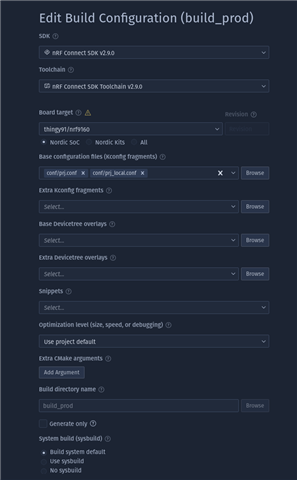Hello,
I recently acquired a Thingy91 board in order to make a hardware prototype. I already have experience developing with the nRF52840 so I took inspiration from my working project.
First I flashed the straight out "Hello World" sample from the v2.9.0 SDK to the nRF9160 using a J-Link external probe and the "west flash" command with success. I could launch the program and read "Hello World" from a serial terminal.
Then I tried to create a basic setup project by copying what worked on my nRF52840 project. These basic functionalities includes:
_ Versionning
_ Using sysbuild with MCUBOOT
_ Signing firmware with an ECDSA 256 key.
The project successfully built and flashed, but unfortunately, didn't execute. No output can be read from the serial terminal anymore, not even the early logs from the bootloader.
What's a bit worrisome is that I can't manage to get back to a state where things worked. When I try to flash the basic "Hello World" sample again, the program doesn't launch anymore (no output on the serial terminal).
Any idea what could be going on and how to fix this ? I tried switching to the most recent v3.0.1 SDK but with no success.
I'm adding the .tar.gz of the project.
Here is my build configuration:

And the output when I flash:
Thank you for your time,
AdBee


